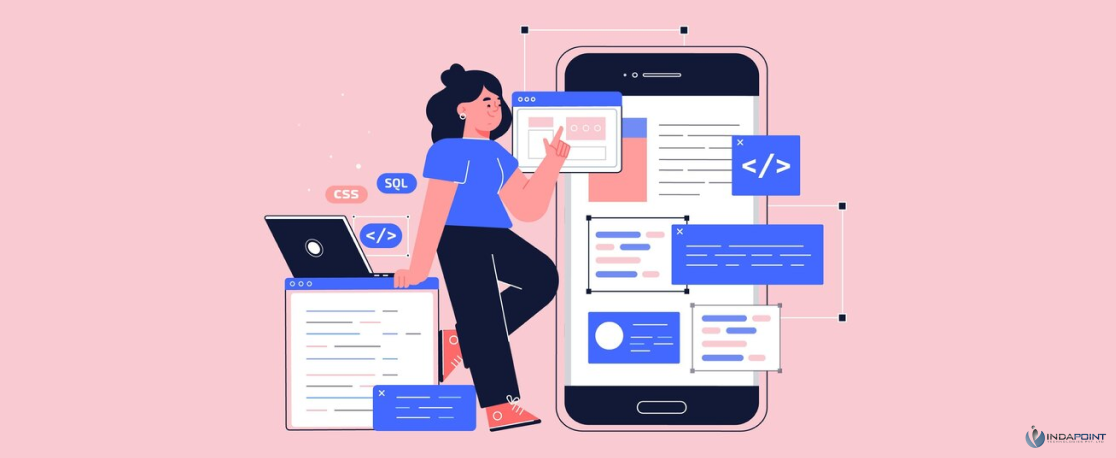Python Party: Dance Your Way to Django Web Apps
May 28, 2024

Django is a high-level Python web framework that promotes rapid development and clean design. Known for its scalability, security, and versatility, Django is used by major sites like Instagram and Pinterest. Key features include built-in ORM, admin interface, and tools for user authentication. Starting with Django involves setting up a project, defining models, creating views and templates, and configuring URLs. Advanced features include form handling, RESTful APIs, and a robust testing framework.
Python Party: Dance Your Way to Django Web Apps
The world of web development is ever-evolving, with new frameworks and technologies constantly emerging. Among these, Django stands out as a robust and versatile framework for building dynamic web applications. Whether you’re a seasoned developer or a newcomer to the world of web development, Django offers a powerful and efficient way to create impressive web applications. In this blog, we’ll explore the magic of Django, its key features, and how you can leverage this framework to build your next web app masterpiece.
What is Django?
Django is a high-level Python web framework that promotes rapid development and clean, pragmatic design. Created by experienced developers, it takes care of much of the hassle of web development, allowing you to focus on writing your app without needing to reinvent the wheel. Django follows the “don’t repeat yourself” (DRY) principle, making it an efficient choice for developers looking to build scalable and maintainable web applications.
Key Features of Django

1. Rapid Development
Django’s architecture is designed to help developers get from concept to completion as quickly as possible. Its “batteries-included” philosophy means it comes with a plethora of built-in features, such as an ORM (Object-Relational Mapping) for database interactions, a powerful admin interface, and tools for handling user authentication.
2. Scalability
Django is built to handle the demands of even the busiest websites. It is used by some of the largest web properties in the world, such as Instagram, Pinterest, and Disqus. This scalability is achieved through its ability to manage multiple levels of traffic and its compatibility with various databases and caching solutions.
3. Security
Security is a major concern in web development, and Django provides several tools to help developers build secure web applications. It includes protection against common vulnerabilities like SQL injection, cross-site scripting (XSS), and cross-site request forgery (CSRF). Additionally, Django encourages developers to follow best security practices by default.
4. Versatility
Whether you’re building a simple blog or a complex, data-driven website, Django is versatile enough to handle the task. Its modular design allows you to use only the components you need, making it easy to adapt to different project requirements.
Getting Started with Django
1. Installation
The first step in dancing your way to a Django web app is installing the framework. Assuming you already have Python
2. Creating a Project
Once installed, you can create a new Django project with a simple command:
Code : django-admin startproject myproject
3. Setting Up the Database
Django supports several databases out of the box, including SQLite, PostgreSQL, MySQL, and Oracle. By default, Django uses SQLite, but you can configure it to use any other supported database by modifying the settings.py file in your project directory.
4. Creating an App
In Django, a project can contain multiple apps, each with its own specific functionality. To create an app within your project, use the following command:
Code : python manage.py startapp myapp
5. Defining Models
Models are the backbone of a Django web application, representing the data structure. Define your models in the models.py file of your app.
Code: from django.db import models
class MyModel(models.Model):
name = models.CharField(max_length=100)
description = models.TextField()
6. Migrating the Database
After defining your models, you need to create the corresponding database tables.
7. Creating Views and Templates
Views in Django are Python functions that handle requests and return responses.
8. URL Configuration
Finally, configure the URLs to map views to specific URLs. Update the urls.py file in your project directory.
Advanced Django Features

1. Django Admin Interface
One of the standout features of Django is its built-in admin interface. This powerful tool allows you to manage your application’s data through a web-based interface without writing a single line of code. You can customize the admin interface to suit your needs, adding custom views and actions as required.
2. Form Handling
Django makes it easy to handle forms and validate user input. The framework provides a comprehensive set of tools for form creation, validation, and processing, allowing you to build complex forms with ease.
3. Authentication and Authorization
Django includes a robust authentication system that handles user authentication, authorization, and session management. You can extend the default user model to include additional fields and customize the authentication process to suit your requirements.
4. RESTful APIs
With Django REST framework (DRF), you can easily create RESTful APIs for your web applications. DRF provides tools and libraries for building APIs, handling authentication, and serialization of data, making it a popular choice for API development.
Conclusion
Django is a powerful and versatile framework that can help you build robust web applications efficiently. Its rich feature set, scalability, and security make it a popular choice for developers worldwide. By following best practices and leveraging Django’s built-in tools, you can create web applications that are not only functional but also maintainable and secure.
We have a team of experienced Django developers ready to help you bring your web application ideas to life. Whether you’re looking to build a new app from scratch or need assistance with an existing project, we have the expertise to deliver the best experience.





